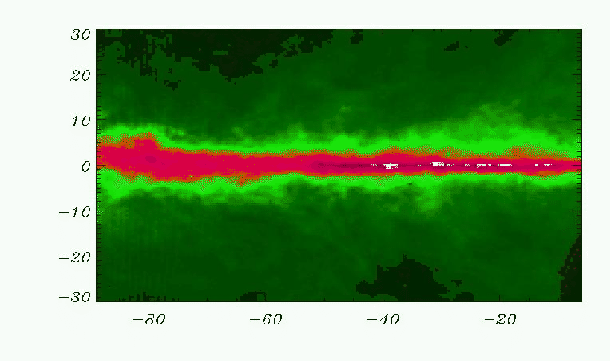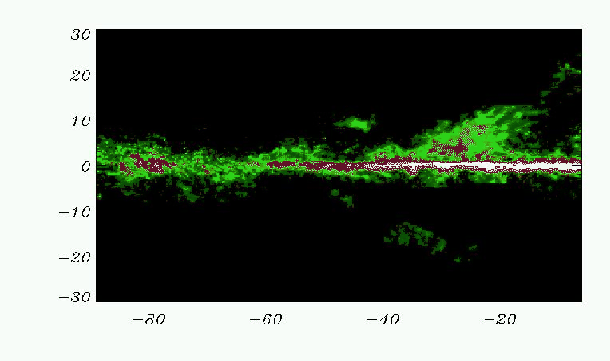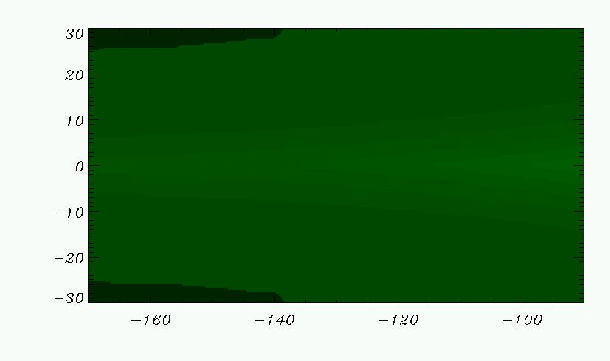



Next: New vs old model
Up: Observing the Diffuse Emission
Previous: Observing the Diffuse Emission
Contents
The intensity of the diffuse gamma-ray flux (E 100 MeV) from different sky direction, M(l,b), foreseen by this model can be evaluated by:
100 MeV) from different sky direction, M(l,b), foreseen by this model can be evaluated by:
 |
(3.1) |
Figure 3.1 and 3.5 show the total AGILE model for the first and second Galactic quadrant.
The contributions to the total emission produced by the different cosmic-rays
targets, for the first Galactic quadrant, are shown in figure 3.2, 3.3 and 3.4 and are obtained respectively by substituting  in eq.3.1 with :
in eq.3.1 with :
Figures 3.6, 3.7 and 3.8 (second quadrant) are obtained in an analogous way.
Figure 3.1:
The AGILE emission model for the first Galactic quadrant.
 |
Figure 3.2:
Contribution of HI regions to AGILE model, for the first Galactic quadrant.
The colorscale is the same shown by the colorbar of figure 3.1.
 |
Figure 3.3:
Contribution of molecular clouds to AGILE model, for the first Galactic quadrant.
The colorscale is the same shown by the colorbar of figure 3.1.
 |
Figure 3.4:
Contribution of the interstellar radiation field to AGILE model, for the first Galactic quadrant.
The colorscale is the same shown by the colorbar of figure 3.1.
 |
Figure 3.5:
The AGILE emission model for the second Galactic quadrant.
The colorscale is the same shown by the colorbar of figure 3.1.
 |
Figure 3.6:
Contribution of HI regions to AGILE model, for the second Galactic quadrant.
The colorscale is the same shown by the colorbar of figure 3.1.
 |
Figure 3.7:
Contribution of molecular clouds to AGILE model, for the second Galactic quadrant.
The colorscale is the same shown by the colorbar of figure 3.1.
 |
Figure 3.8:
Contribution of the interstellar radiation field to AGILE model, for the second Galactic quadrant.
The colorscale is the same shown by the colorbar of figure 3.1.
 |
Figure 3.9:
Comparison between the EGRET (left) and AGILE (right) diffuse emission model for the Polaris Flare regions.
The colorscale is the same shown by the colorbar of figure 3.1.
 |




Next: New vs old model
Up: Observing the Diffuse Emission
Previous: Observing the Diffuse Emission
Contents
Andrea Giuliani
2005-01-21








